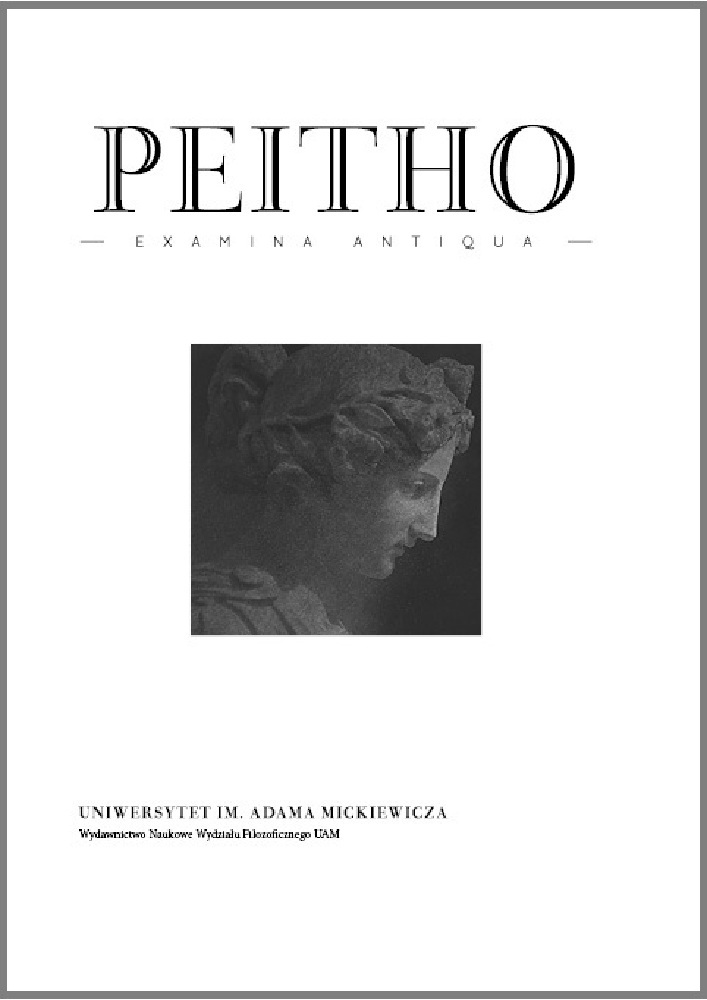Abstract
The present paper aims to discuss how the Socratic method operates with Euthyphro inside the Euthyphro. The first part of the article focuses on the character’s description, upon which it moves to analyzing the very method itself not only in terms of its argumentative form but also in terms of its psychological and social aspects. Euthyphro is shown to have been a supporter of religion that was entirely incapable of living up to the religious ideals that he so confidently advocated for. Through his portrayal of Socrates’ refutation of Euthyphro, Plato seeks not only to redeem his teacher but also to criticize the then society. When describing the Socratic method, the present paper proposes to view it with a “calm distance” on the grounds of the fact that the distinctive feature of the method consists in creating an emotional distance between Socrates and Euthyphro. The purpose of such a strategy is to make Euthyphro realize the weakness of his position and embrace the purification through the socratic elenchos.
References
Beversluis, J., 2000, Cross-Examining Socrates. A Defense of the Interlocutors in Plato’s Early Dialogues, Cambridge.
Brisson, L., 2000, Lectures de Platon, Paris.
Brisson, L., 2008, Platon, Oeuvres Complete, Paris.
Burnet, J., (1924, 1982), Euthypro, Apology of Socrates, Crito, Oxford.
Croiset, M., 1985, Platon Oeuvre Completes (I), Paris.
Dorion, L.-A. Dorion, 1997, “Introduction à l’Euthyphron”, Lachés/Euthyphron, Paris.
Dover, K. J., 1974, Greek Popular Morality in the Time of Plato and Aristotle, Indianapolis–Cambridge.
Furley, W. D., 1985, “The Figure of Euthyphro in Plato’s Dialogue”, Phronesis 30, pp. 201–208.
Galli, G., 1958, Socrate in alcuni dialoghi socratici, Torino, pp. 183–203.
Gill, C., 2006, “Le dialogue platonicien”, in : L. Brisson, F. Fronterotta (eds.), Lire Platon, Paris, pp. 53–75
Goldschmidt, V., 1947, Les dialogues de Platon, structure et méthode dialectique, Paris.
Guthrie, W. K. C., 1975, A History of Greek Philosophy, vol. IV, Cambridge.
Hoerber, R. G., 1958, “Plato’s Euthyphro”, Phronesis 3, pp. 95–107.
Jaeger, W., 1933, Paideia, die Formung des griechischen Menschen, Bd. 1, Berlin.
Merlan, P., 1947, “Form and Content in Plato’s Philosophy”, JHI 7, pp. 406–430.
Nails, D., 2002, The people of Plato. A prosopography of Plato and Other Socratics, Indianapolis.
Rabinowitz, W. G., 1958, “Platonic piety. An essay toward the solution of an enigma”, Phronesis 3, pp. 108–120.
Ritter, C., 1910, Platons, Sein Leben, seine Schriften, seine Lehre, München.
Rossetti, L., 2011, Le dialogue socratique, Paris.
Schaerer, R., 1938, La question platonicienne:études sur les rapports de la pensée et de l’expression dans les dialogues, Neuchâtel.
Severino, E., 1959, Il principio di non contraddizione. Libro quarto della Metafisica, Brescia.
Severino, E., 2005, Fondamento della contraddizione, Torino.
Tarca, L. V., 2001, Differenza e negazione. Per una filosofia positiva, Napoli.
Tarrant, D., 1955, “Plato as Dramatist”, JHS 75, pp. 82–89.
Taylor, A. E., 1971, Plato: the Man and His Work, London.
Vlastos, G., 1991, Socrates: Ironist and Moral Philosopher, Cambridge.
Wilamowitz-Moellendorf, U. von, 1952, Platon. Sein Leben und seine Lehre, Berlin.
License
Peitho provides immediate open access to its content on the principle that making research freely available to the public supports a greater global exchange of knowledge.
